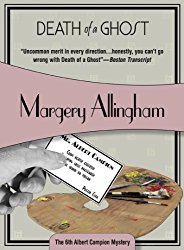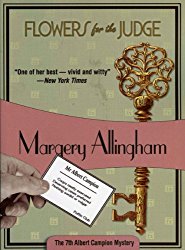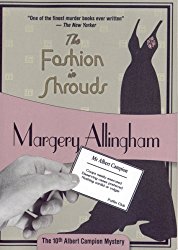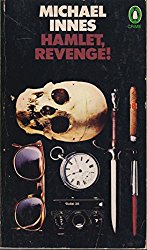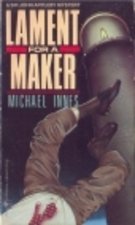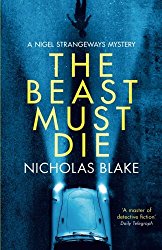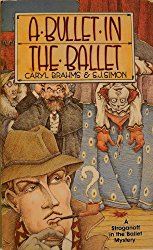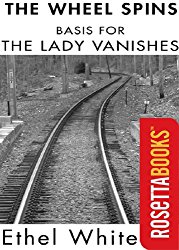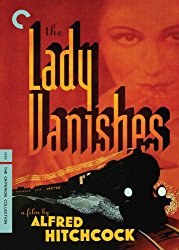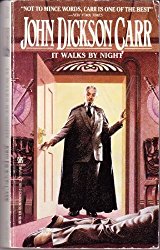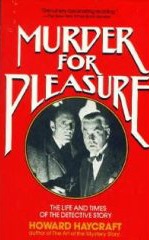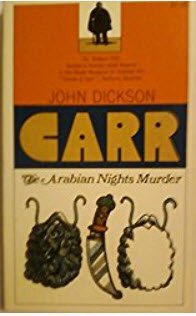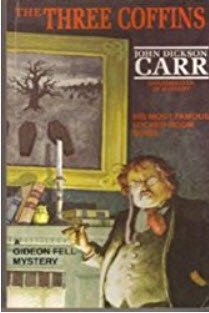The "Moderns": England: 1930
|
Margery Allingham (b. 1904- ) created Albert Campion, her detective . "Her earlier novels are picaresque and may disappoint some readers; later books have unpretentious cerebral detection" (Haycraft, Murder for Pleasure).
|
Click Image to Click the image below to |
"The Allingham-Campion 'method' is an admirable blend of good story-telling, delicate, yet sharp delineation of character, and puzzles that hinge primarily on mental rather than physical means -- the whole presented in the fluid prose of a thoroughly adept and sophisticated craftsman" (Haycraft,Murder for Pleasure).
- Flowers for the Judge (1936)
- The Fashion in Shrouds (1938)
- Traitor's Pulse (1941)
- The
BBC maintained its normally high production standards when it featured
Peter Davison as Campion in some very enjoyable teleplays.
Black Plumes (1940) was "Her only attempt to substitute Inspector Birdie for Campion....Had the book appeared over some other name, it would doubtless have been hailed as a significant and promising achievement" (Haycraft, Murder for Pleasure).
|
Click Image to Click the image below to |
Click Image to Click the image below to |
Allingham was named as one of the three "white hopes" of the British detective story by John Strachey; the others are Michael Innes and Nicholas Blake (whose works are described below).
|
Click Image to Click the image below to Click Image to Click the image below to |
John Innes Mackintosh Stewart (b. 1906- ) took the pseudonym "Michael Innes." Haycraft writes, "He says of his own detective stories: 'I would describe some of them as on the frontier between the detective story and the fantasy: they have a somewhat "literary" flavor but their values remain those of melodrama and not of fiction proper.' This is a fairly accurate self-estimate, but many admirers will object that it is overly-modest as regards at least two of the Innes novels, Hamlet, Revenge! (1937) and Lament for a Maker (1938) -- of which more later" (Murder for Pleasure).
|
|
Cecil Day Lewis (b. 1904- )used the pseudonym "Nicholas Blake." As Lewis, he was a poet. John Strachey says, "He writes even better when he is, presumably, pot-boiling as Nicholas Blake than when he is 'giving himself to literature' as Day Lewis."
|
Click Image to Click the image below to |
Ngaio Marsh (b. 1899- ) wrote about her detective, Inspector Roderick Alleyn, who had some similarities to Lord Peter Wimsey.
- A Man Lay Dead (1932) was her first novel.
- Artists in Crime was her first American publication; but her sixth effort in the field (1931).
Georgette Heyer (b. 1902- ) added a new and harder veneer to the English humorous detective story as conceived by A.A. Milne.
- Merely Murder (1935)
R.C. Woodthorpe wrote the generally amusing Nicholas Slade stories.
Lady Harriette Russell Campbell (b. 1883- ) created Simon Brade, dubbed "another competent sleuth..." by Howard Haycraft.
Gladys Mitchell (b. 1901- )took the pseudonym "Stephen Hockaby" and wrote about her detective, Mrs. Bradley (her detective). Diana Rigg starred in the BBC teleplays.
|
Doris Caroline Abrams (b. 1901- )used the pseudonym "Caryl Brahms." Haycraft tells us that all out farce is her stock in trade. She and S.J. Simon wrote A Bullet in the Ballet (1938). Haycraft describes their efforts as "Scandalously funny works." Haycraft lists the following as "new-comers of especial promise." (This was, of course, during the 1940s.)
|
Click Image to Click the image below to |
Richard Henry Sampson (b. 1896- ) Under the pseudonym "Richard Hull," Sampson wrote The Murder of My Aunt (1935). Howard Haycraft calls it "a classic of its kind" and "an intellectual shocker par excellence" (Murder for Pleasure, p. 196) Influenced by Francis Iles's Malice Aforethought, The Murder of My Aunt is an "inverted" detective story (A.K.A. "Events-leading-up-to-the-crime" type of story) -- Mrs. Belloc Lowndes and Francis Iles did these earlier. .
Colwyen Edward Vulliamy (b. 1886) as "Anthony Roles," his pseudonym, produced Clerical Error (English title: The Vicar's Experiment) (1932), which is "regarded by some readers as a small masterpiece and by others as merely dull and imitative" (Haycraft, Murder for Pleasure).
E.E. Addis used the pseudonym "Peter Drax."
|
Click Image to Click the image below to |
Ethel Lina White wrote The Wheel Spins (1936), which was made by Hitchcock as the movie The Lady Vanishes. (Francois Truffaut went to the cinema to watch this film over and over again. It inspired him to become a famous director himself. Years after both Hitchcock and Truffaut were world famous and well respected directors, Truffaut interviewed Hitchcock. The brilliant series of interviews were transcribed and published in Hitchcock/Truffaut. |
|
The works of Alice Campbell (b. 1887- )resemble those of Mrs. Belloc Lowndes. Writing as "Joseph Shearing," she produced fictional reconstructions of famous crimes. F. Tennyson Jessewrote the "Solange" stories. Graham Greene (b. 1904)produced "psychological 'entertainments.' " J. Russell Warren (b. 1886- ) |
Click Image to Click the image below to |
Raymond Postgate (b. 1896- ) was G.D.H. Cole's brother-in-law. His Verdict of Twelve (1940) was about interpreting a murder trial in terms of the jurors' past histories and backgrounds.
Constance Ashby (b. 1899- )wrote He Arrived at Dusk (1933), which Haycraft calls "an unrepeatable blending of the ghost story and legitimate detection."
Constance Rutherford's The Forgotten Terror (1938) was named by Alexander Woollcott in a list of "best mysteries" for the White House library.
|
Click Image to Click the image below to Click Image to Click the image below to |
John Dickson Carr (November 30, 1906 to February 27, 1977)-- also writes as "Carter Dickson." Haycraft writes, "Occasionally...a writer appears, who, utilizing only conventional and accepted techniques, nevertheless raises those techniques to so high a level of excellence that he stands out above his fellows and merits special mention. Such an author in the field of the detective story is John Dickson Carr" (Murder for Pleasure).
|
Bencolin of the Paris police was Carr's first detective-hero, but far from his last. According to Haycraft, Carr's "fullest popularity" was reached when he created Dr. Gideon Fell. Fell, modeled after the real-life G.K. Chesterton, is one of my personal favorite detectives of fiction.
Carr used the pseudonym "Carter Dickson" (ne "Carr Dickson").
He also invented Sir Henry Merrivale ("H.M." or "The Old Man").
- The Arabian Nights Murder In his essay "Inspector on Detective Stories," R. Philmore writes that The Arabian Nights Murder is "the best detective story every written."
- Compared
with Ellery Queen, Haycraft writes" The technical position of Mr.
Carr-Dickson in the British detective story is very similar to that of
the Messrs. Ellery Queen in the native American product. Both are
avowedly 'entertainment' writers, presenting sound puzzles in the guise
of swift-moving fiction, with characters by no means profoundly drawn
but nevertheless colorful and adequate to the day. Carr has one
important additional asset (present also, it should be said, but to a
lesser extent, in the Queen novels). His forte has been and remains the
rational crime problem costumed as an eerie tale of the seemingly
supernatural. Were not his explanations so meticulously complete and
realistic, this would be a chargeable error under the canon. As it is,
his method represents perhaps the most consistently satisfactory
combination to date of the 'shudder tale' with bona fide sleuthing.
"Even in those of his stories which do not fully depend on this device, he excels -- as does Queen on the other side of the Atlantic -- in bizarre, fantastic statements of the case (e.g., the opening chapters of The Arabian Nights Murder), which are capable of later and logical explication. But also like Queen, he has the fault that his processes are sometimes too intricate, his devices too far-fetched, to carry entire conviction, regardless of their careful logic: May Lamberton Becker has referred to his 'almost over-ingenious exercises.' This is the only major flaw in the Carr opera; if there are others, they remain to be discovered" (Haycraft, Murder for Pleasure). - Nine -- And Death Makes Ten (1940)
|
Click Image to Click the image below to |
Click Image to Click the image below to |
Colonel March was Carr's other detective. Colonel March worked in Scotland Yard's "Department of Queer Complaints." He is another of my personal favorites.
Haycraft opines, "the only personal mystery surrounding Mr. Carr-Dickson is how a single writer can produce so many stories so consistently high in quality."
In "The Locked-Room Lecture" essay by John Dickson Carr, the locked-room lecture is a famous chapter from the Dr. Gideon Fell novel The Hollow Man (1935) -- also known as The Three Coffins (1935).
Sir Basil Thomson (1861-1939) wrote about the "sometimes too methodical" Constable Richardson. He also wrote Mr. Pepper parodies, which Haycraft didn't recommend ("...but not his ill-advised Mr. Pepper parodies," Haycraft wrote in Murder for Pleasure).
Christopher Bush (b. 1885- ) wrote about Ludovic Travers.
John Alexander Ferguson (b. 1873- )wrote about Francis MacNab; Miles Burton (b. 1903- )created Inspector Arnold and Desmond Merriod; M.R.K. Burge (b. 1894- ), under the pseudonym "Milward Kennedy," created his detective, Inspector Cornford; Ernest Robertson Punshon (b. 1872- ) created Sergeant Bobby Owen in Proof Counter Proof, which Alexander Woollcott included his "White House" list; Elspeth Huxleywrote about the African Vachell; and Patricia Wentworthcreated Inspector Lamb.
"Bruce Graeme" (b. 1900)created Sergeant Beef; Leo Brucewrote about Pierre Alain; John Bentleycreated Dick Marlow; Peter Cheyney wrote about Slim Callaghan and Lemmy Caution who, Haycraft tells us, "work hard to prove themselves the British equivalent of Nick Charles and Sam Spade" (Murder for Pleasure).
Cecil Freeman Gregg (b. 1898- )
Colonel Walter S. Masterman
Francis Durham Grierson (b. 1888- )
"E.C.R. Lorac" (b. 1894)
Leonard Reginald Gribble (b. 1908- )
Leslie Charteris (b. 1907- ) wrote about the ever-popular Simon Templar ("The Saint"), who was in eight films and a number of television episodes. Roger Moore (later to be James Bond in seven films) portrayed The Saint on the television series.
Gerard Fairlie (b. 1899- ) continued the "Sapper" tradition by continuing to write about H.C. McNeile's Bulldog Drummond. Nigel Morland (b. 1905) wrote about Mrs. Pym; Francis Gerard. Sydney Horler (b. 1888- ) wrote "out-and-out shockers"; Jefferson Farjean (b. 1883- ) wrote in the romantic vein; and Anthony Mortonwrote Rafflesque Blue Mask stories.
Eric Ambler (b. 1909- )"has given the spy-and-intrigue story new life" (Murder for Pleasure):
- Background to Danger (1937)
- A Coffin for Dimitrios (1939)
Manning Coles:
- Drink to Yesterday
- Toast to Tomorrow
David Keith
Amazon and the Amazon logo are trademarks of Amazon.com, Inc. or its affiliates.
(This is a link through which I make a small commission if you buy. See here for more details.)
